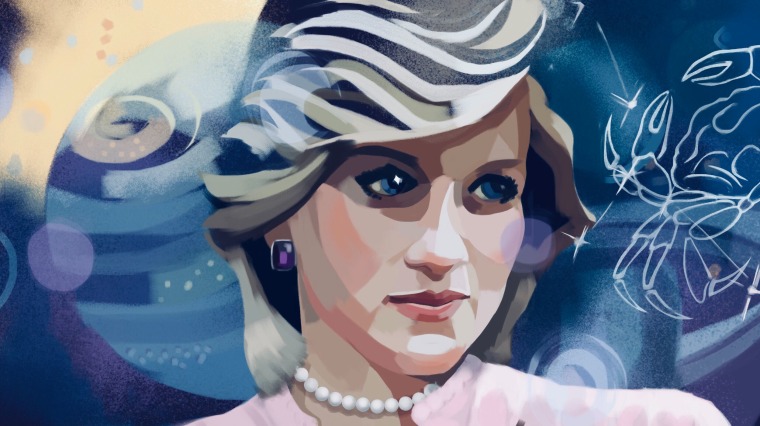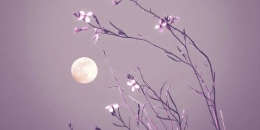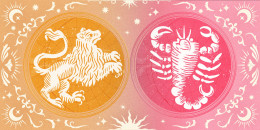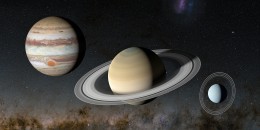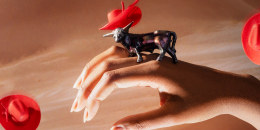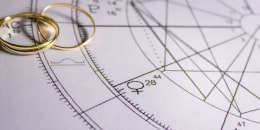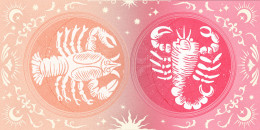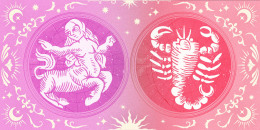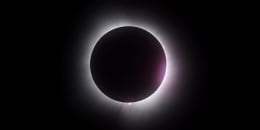Penny Thornton says she was in her home outside of London when the phone rang. It was 1986. On the other line was a soft-spoken woman, whose voice was nevertheless recognizable: Diana, the Princess of Wales.
“I knew instantly,” Thornton told TODAY from her home in London. At the time, Thornton, a professional astrologer and published author who studied at the Faculty of Astrological Studies, had previously worked with Diana’s sister-in-law, Sarah Ferguson. Now, Diana wanted her own chart read. Thornton explained that, with a deadline for her book, she wasn’t taking on new clients at the moment — not even if they were members of the royal family.
Still, Diana stayed on the line, and Thornton says the two went on to speak about their lives: Both had boys about the same age, and both had studied to be ballerinas. “We talked like two women would,” she said.
Toward the end of their conversation, Diana said something that struck Thornton. “She said, ‘Oh, well, thank you, Penny. I’m just hoping that there’s light at the end of the tunnel.’ And of course, when I heard that, I thought, ‘Oh, she’s in trouble.’ OK, that’s it. So I said, ‘Right. I’ll see you right away.’ And I went up to Kensington Palace about a week later,” Thornton said. (Kensington Palace did not return TODAY’s request for comment.)
Thornston says their first meeting lasted four hours. Diana and Thornton sat on a couch in the sitting room of Diana and Prince Charles’ wing in Kensington Palace, going over aspects of Diana’s chart, beginning a six-year long relationship.
While Thornton says she spoke to Diana for the first time in 1986, she had been studying her chart for longer. Thornton's first book was on the topic of “synastry,” or the study of relationship compatibility.
Diana and Charles married in 1981 following a whirlwind engagement. “Everywhere you were hearing astrologers say, ‘Oh, they’re a perfect match. She’s a Cancer. He’s a Scorpio,’” Thornton remembered of the media coverage.
Thornton, however, saw difficulties in the stars. In her book on synastry, published a year after Diana and Charles were married, Thornton wrote what she saw — even if it was an unpopular opinion. “In my heart of hearts, of course, I knew this marriage is never going to work. That was back in 1982,” Thornton told TODAY. Charles and Diana formally separated 10 years later and divorced in 1996.
Thornton says their eventually well-publicized marital difficulties were, perhaps, detectable in elements of their pairing: An age difference of 12 years, the pressure of the role, and the fact that Charles had never gotten over his relationship with Camilla Parker Bowles.
In my heart of hearts, of course, I knew this marriage is never going to work.
Penny Thornton on Diana and Charles
Charles reportedly met Camilla at a polo match in 1970. (She was Camilla Shand at the time.) After dating, the couple split up during Charles’ service with the Royal Navy. Camilla married Andrew Parker Bowles in 1973; Charles married Diana in 1981. Their romantic relationship persisted during that time, however, leading Diana to famously say, “There were three of us in that marriage,” in a 1995 interview with Martin Bashir. Charles admitted to infidelity in a televised 1994 interview with Jonathan Dimbleby. (He and Camilla later married in 2005, with her becoming the Duchess of Cornwall. She’ll eventually become queen consort when Charles ascends the throne.)
By the time Thornton met the princess face-to-face in 1986, the marital difficulties Thornton predicted had come to a head.
“It was exactly the fulfillment of all the things that I felt about their astrology, that this wasn't going to be a relationship that could work,” Thornton said.
“I was told later that she had already started packing her bags to leave Kensington Palace because she was no longer prepared to stay. So it was important during that time that we were together that I gave her some skills to handle her situation, to manage her situation,” she said.
Thornton saw an 'element of sacrifice' in Diana's chart
Thornton sees astrology as a road kit for navigating an individual’s life. A natal chart, or a map of the stars at the time when you’re born, is a mixture of fate and the tools required to navigate that fate.
“My favorite piece of advice is always work with what you’ve got. Your horoscope is your life path. You can’t change it. That’s how you are. What you need to do is use all those things you have in your chart — learn from them, develop them. They are tools with which to carve out your path,” she said.
Born July 1, 1961, Diana was a Cancer sun with a Sagittarius rising and an Aquarius moon.
According to Thornton, Diana’s chart had the markings of a martyr and a revolutionary. In the introduction to her book, “With Love from Diana,” published in 1995, Thornton wrote of Diana: “Remember, like all prophets damned by their own country, her value as a change bringer and transformer cannot be appreciated now. Her mantle is to drag the monarchy kicking and screaming, if necessary, at last into the 20th century.”
She also told TODAY, “There was a great element of sacrifice in Diana’s chart. She had Neptune in the first house and you know, that is once a very mystical and spiritual kind of placement. But it also has a lot to do with betrayal.”
While working with Diana, as with all her clients, Thornton says it was her intention to help her find those tools. During their first meeting, Thornton encouraged Diana to start thinking from a humanitarian point of view.
(Diana) started to be able to take some steps outside the bubble that she was in — and well, the rest is history.”
Penny Thornton
“She was feeling very helpless in her situation. She couldn’t see her way forward. So I said to her at the time, ‘You’ve got to convert your passivity and your suffering. Turn it into a strength. Go and help other people who are suffering,’” she recalled telling Diana. “I would say that sort of thing to other people. But the words resonated with her — this idea of turning your disadvantage into an advantage. I think starting from that point, she started to be able to take some steps outside the bubble that she was in — and well, the rest is history.”
Thornton recalls two dreams about Diana, which she said were 'prophetic'
In the years to come, Thornton and Diana’s relationship continued. Thornton says they would talk over the telephone or she’d write Diana letters dispensing advice. “I was very professional. I didn’t hang out with Diana — we didn’t go out to lunch or the movies. I was her mentor, and I always had her best interest at heart,” Thornton said.
Thornton says she also sent Diana detailed dreams she had in 1989, a month apart, which she published in her 1994 book. In one sequence, Thornton wrote that she saw “two police motorcycles and a white car streaming ahead, leaving a black car on its own.” In another, she saw Queen Elizabeth giving a somber address. Still, Thornton only believed the dream to be prophetic after Diana died in 1997, and she saw the way her vision lined up with the details of the car crash in the Paris tunnel.
Diana and Thornton’s professional relationship ended in 1992, Thornton says, after Andrew Morton published an incendiary biography of Diana that detailed her loveless marriage to the future king.
Thornton’s first consultation with Diana is mentioned in the biography, which also went into the state of the royal marriage. “Diana admitted to Penny that she couldn’t bear the pressure of her position any longer and that she had to leave the system. ‘One day you will be allowed out but you will be allowed out as opposed to divorcing,’ Penny told her, confirming Diana’s existing opinion that she would never become Queen,” the book reads.
Both Diana and Morton, at the time, said Diana was not involved in the making of the tell-all, and that her friends and family were the main sources. After Diana’s death in 1997, Morton confirmed that Diana was the source, per Frontline.
But the biography was big news — and Thornton, then writing about astrology for a newspaper, says she was swept into the aftermath.
As recounted in “With Love From Diana,” Thornton said her relationship with Diana ended after Diana’s phones were tapped, and a leaked conversation between them became the subject of a newspaper headline. “It looked like I’d gone to the press, which I hadn’t. It drew a wedge between Diana and myself," she said.
Further, seeing her connection to Diana, Thornton’s employers wanted her to spill details that went against her code of ethics.
“There was a lot of fallout from the revelations,” she said. “I had to continue my career in spite of the hoo-ha that happened at the time.”
Diana went on to work with other astrologers and psychics in the years to follow, but not Thornton. “I was not able to advise her when she needed advice,” she said.
Thornton concluded “With Love From Diana” with an open letter to the princess, applauding her on her decision to step back from public life in 1993 (though she re-entered public life soon after).
Thornton was on an airplane from New York to London when she learned of Diana’s death. She was killed in a car crash in Paris in 1997. “It seemed inconceivable that arguably the most famous woman in the world had been killed in a car accident, a result of human error,” Thornton wrote in an excerpt of an unpublished memoir, posted to her website.
In that same book, Thornton wrote that she had been “concerned about several potentially violent factors in (Diana’s) chart that year,” but thought they might be hits on her reputation. “It was all too dreadful,” she wrote.
Twenty-five years later, looking back on those six years she spent with Diana, Thornton said she considers her relationship with the princess a “poisoned chalice,” because it did Thornton more harm than good on a professional level.
“Having said that, I felt I was very privileged to have been there for Diana during those years. I did find her a most wonderful person. And so I feel blessed,” she said. “I always felt and have always continued to feel very connected to Diana.”
